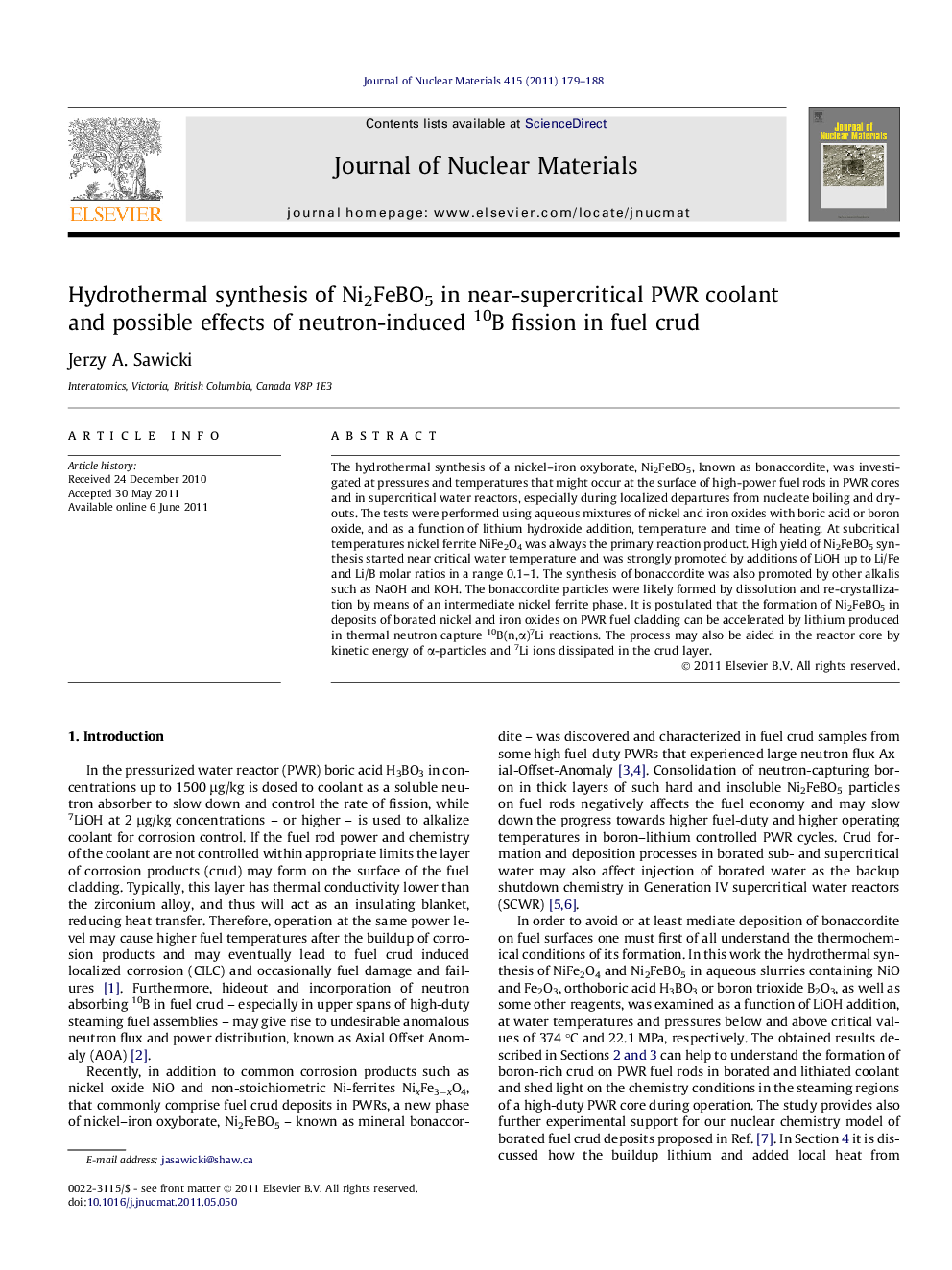| Article ID | Journal | Published Year | Pages | File Type |
|---|---|---|---|---|
| 1566813 | Journal of Nuclear Materials | 2011 | 10 Pages |
The hydrothermal synthesis of a nickel–iron oxyborate, Ni2FeBO5, known as bonaccordite, was investigated at pressures and temperatures that might occur at the surface of high-power fuel rods in PWR cores and in supercritical water reactors, especially during localized departures from nucleate boiling and dry-outs. The tests were performed using aqueous mixtures of nickel and iron oxides with boric acid or boron oxide, and as a function of lithium hydroxide addition, temperature and time of heating. At subcritical temperatures nickel ferrite NiFe2O4 was always the primary reaction product. High yield of Ni2FeBO5 synthesis started near critical water temperature and was strongly promoted by additions of LiOH up to Li/Fe and Li/B molar ratios in a range 0.1–1. The synthesis of bonaccordite was also promoted by other alkalis such as NaOH and KOH. The bonaccordite particles were likely formed by dissolution and re-crystallization by means of an intermediate nickel ferrite phase. It is postulated that the formation of Ni2FeBO5 in deposits of borated nickel and iron oxides on PWR fuel cladding can be accelerated by lithium produced in thermal neutron capture 10B(n,α)7Li reactions. The process may also be aided in the reactor core by kinetic energy of α-particles and 7Li ions dissipated in the crud layer.
► The hydrothermal synthesis of Ni2FeBO5 (bonaccordite) has been examined at temperatures and pressures below and above critical point of water. ► It is shown that the synthesis of bonaccordite is promoted by additives of lithium hydroxide and other alkalis. ► Possible role of n-10B reactions in enhancing the formation of bonaccordite on nuclear fuel rods in PWR reactors is discussed.
